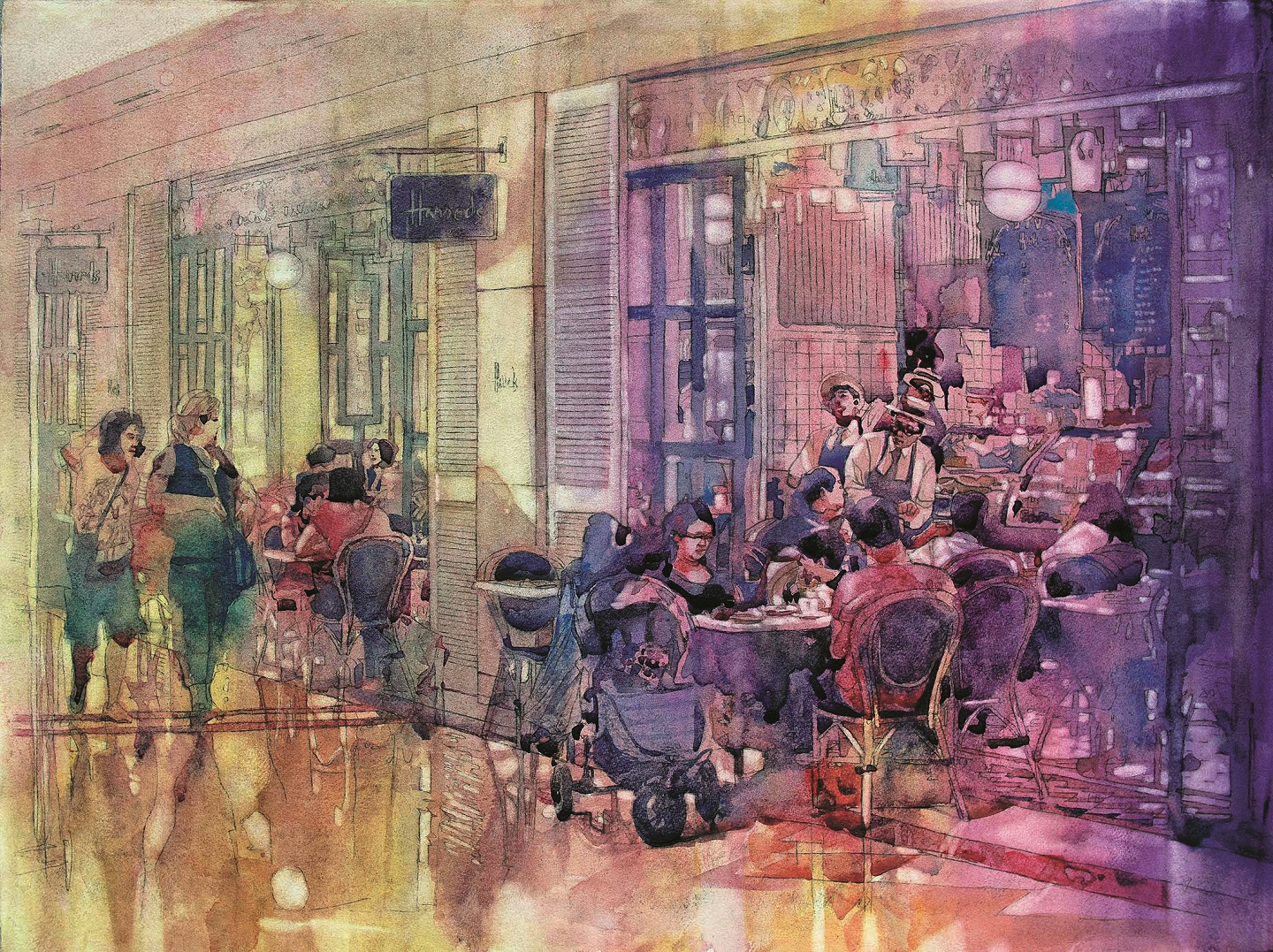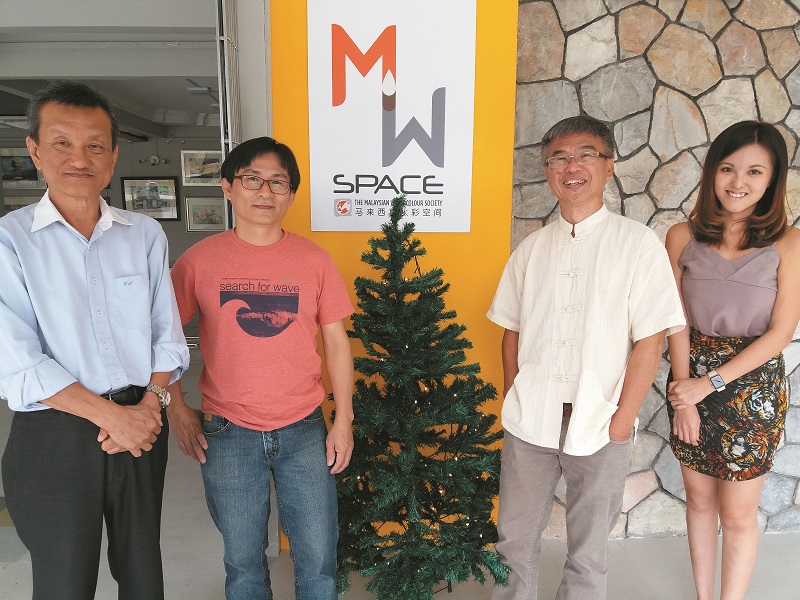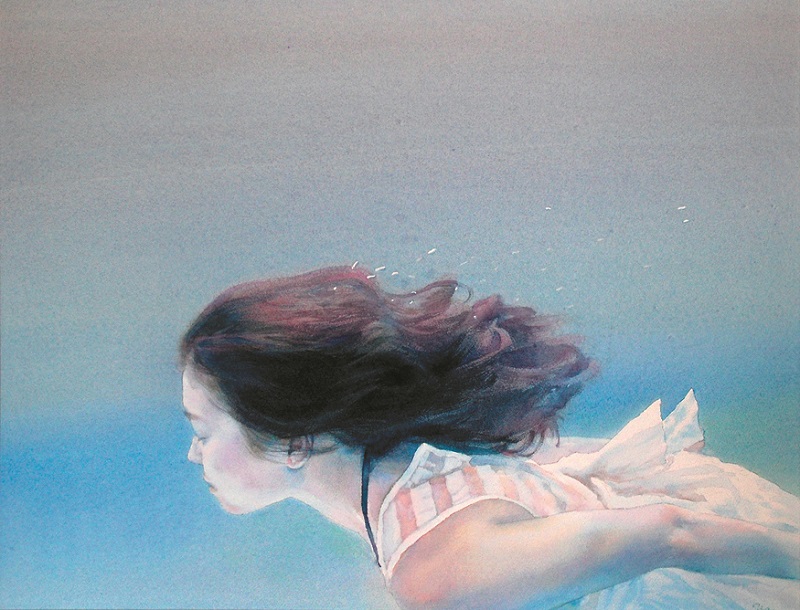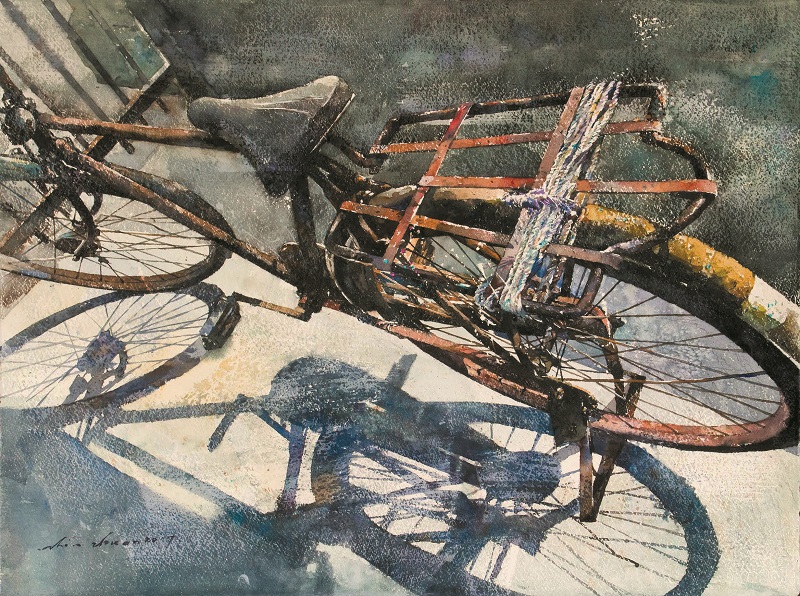
Café Café by Khoo Choo Kian
Re-Interpretation International: Watercolour Exhibition KL 2018, which opens at the Malaysian Watercolour Space on Jan 21, heralds two firsts for the Malaysian Watercolour Society: It is MWS’s first joint exhibition with artists from China, and first show at its new premises in Petaling Jaya, Selangor.
MW Space belongs to the family of art lover Francis Ng Hee Chang, who hopes it will serve as a platform to showcase works by MWS members and for the public to interact with artists through art demonstrations, workshops, masterclasses and talks.
“We are just providing the space. Others are putting in the effort to bring in the Chinese artists and install the hanging system and lighting,” says Ng, who retired from RAM Holdings recently. “We feel it is a worthwhile cause, working together to create awareness of and interest in the art scene.”
His daughter Miko Ng Yoon Xian, the director of MW Space, hopes the venue will “expose Malaysians to art in an open and friendly environment and enable them to talk with artists, ask questions and feel free to learn more about art”.
The month-long Re-Interpretation International features 57 works by 25 MWS members and 31 Chinese artists. Among the latter are China’s top watercolourists, one of whom, Xiao Xing Hu, will give a demonstration at 3pm on Jan 21.

MWS chairman Calvin Chua Cheng Koon says the art of watercolour has grown over the last decade, but “we still have to work hard. Watercolour is something that is easy to do but hard to master”. Society member Khoo Choo Kian adds that watercolour has become more popular in the last five years. “You start your training with watercolour and it is the base for everything, whether you are an oil or acrylic artist.” China’s growth has given the medium a boost, partly because it is similar to Chinese brush painting, he observes.
Ng says MW Space is not exactly a gallery because its aim is not to sell art. “We want to attract the public to come and see some of the great works of MSW members and use it as a space for collaboration between the society and fellow [watercolour] societies around the world. All the paintings on show do not have a price tag because the idea is to let visitors be drawn to them first and find out more about the artist. The more people interact, the more their interest in art will grow.
“Art is actually part of social development. The journey [towards that] is still very long and needs the backing of the whole society. We need young people with energy to run the space,” he adds, explaining why Miko is heading the project.

Exposure to art creates appreciation for it. That, in turn, influences people to look at art as an investment, an alternative to buying shares and property. “The first step is always important because many people think it is too expensive to collect art,” Chua says. “Collectors always start with their interest. They buy a piece they like very much and hang it in their home. Later, someone may visit who knows the artist and talks about the painting and the owner feels proud, besides feeling happy looking at it.”
Every home should have one or two pieces of original art because, compared with items such as sofas and dining sets, for example, they are relatively inexpensive, he says. But unlike household items that one will have to discard because of wear and tear, the value of an artwork remains and is likely to increase.
Khoo compares buying a painting to acquiring a piece of property. “It’s a long-term investment that takes time to grow. Once the land matures, you sell it. The same with art, which could [fetch] double the original price after some years.” In view of that, Ng hopes to convert those who are unaware of the business potential of art into “newly developed collectors”.

Knowing what to buy is a challenge, as is the fear of purchasing a fake or an imitation. MWS, which was formed in 1982, plans to give people a better perspective by organising seminars on investing in art. But it is not enough to just purchase a painting and hang it up, says Ng, who started collecting art about eight years ago and has grown in confidence with knowledge. “When you buy art and interact with the artist, you go into what inspired him to paint the way he did and the characteristics of the work.”
Chua says the standard of Malaysian watercolour paintings is high. “Our style is multiracial and different. Every time our watercolourists join a group show abroad, we attract a lot of attention because of our works, our styles and colours. This is our advantage.”
Re-Interpretation International is on at MW Space, 21 Jalan SS3/39, PJ, until Feb 21. Daily, 11am to 3pm (except when the space is closed for private functions). This article first appeared on Jan 22, 2018 of The Edge Malaysia.


